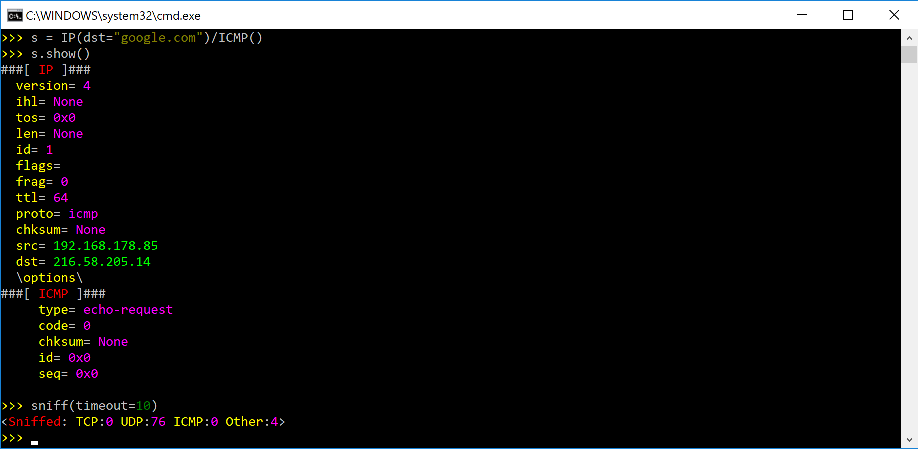
Parser.add_argument("-i", "-iface", help="Interface to use, default is scapy's default interface") + "It is suggested that you run arp spoof before you use this script, otherwise it'll sniff your personal packets") Parser = argparse.ArgumentParser(description="HTTP Packet Sniffer, this is useful when you're a man in the middle." \ Now let's implement the main code: if _name_ = "_main_": We're going to pass it in the script's arguments. We are extracting the requested URL, the requester's IP, and the request method here, but don't be limited to that, try to print the whole HTTP request packet using packet.show() method, you'll see a tremendous amount of information you can extract there.ĭon't worry about the show_raw variable, it is just a global flag that indicates whether we print POST raw data, such as passwords, search queries, etc. This function is executed whenever a packet is sniffed We passed the process_packet() function to sniff() function as the callback that is called whenever a packet is sniffed, it takes packet as an argument, let's implement it: def process_packet(packet): Sniff(filter="port 80", prn=process_packet, store=False)Īs you may notice, we specified port 80 here, that is because HTTP's standard port is 80, so we're already filtering out packets that we don't need. Sniff(filter="port 80", prn=process_packet, iface=iface, store=False) Sniff 80 port packets with `iface`, if None (default), then the Let's define the function that handles sniffing: def sniff_packets(iface=None): Let's import the necessary modules: from scapy.all import *įrom import HTTPRequest # import HTTP packet We need colorama here just for changing text color in the terminal. If you have problems installing Scapy, check these tutorials:
#Installing scapy win 10 install
Let's install the requirements for this tutorial: pip3 install scapy colorama In Scapy 2.4.3+, HTTP packets are supported by default. The basic idea behind the recipe we will see in this tutorial, is that we keep sniffing packets, once an HTTP request is captured, we extract some information from the packet and print them out, easy enough? let's get started. There are other tools to capture traffic such as tcpdump or Wireshark, but in this guide, we'll use the Scapy library in Python to sniff packets.

In this tutorial, you will see how you can sniff HTTP packets in the network using Scapy in Python. Monitoring the network always seems to be a useful task for network security engineers, as it enables them to see what is happening in the network, see and control malicious traffic, etc.
#Installing scapy win 10 windows


#Installing scapy win 10 software
The suggested URL to download the missing software is wrong (HTTP 404). Get it with "Microsoft Visual C++ Build Tools": errorĬomplete output from command c:\users\rh\appdata\local\programs\python\python37\python.exe -u -c "import setuptools, tokenize _file_='C:\\Users\\RH\\AppData\\Local\\Temp\\pip-install-wbfanl圓Įtifaces\\setup.py' f=getattr(tokenize, 'open', open)(_file_) code=f.read().replace('\r\n', '\n') f.close() exec(compile(code, _file_, 'exec'))" install -record C:\Users\RONALD~1.HEI\AppData\Local\Temp\pip-record-m26yfbyt\install-record.txt -single-version-externally-managed -compile:Įrror: Microsoft Visual C++ 14.0 is required.


 0 kommentar(er)
0 kommentar(er)
